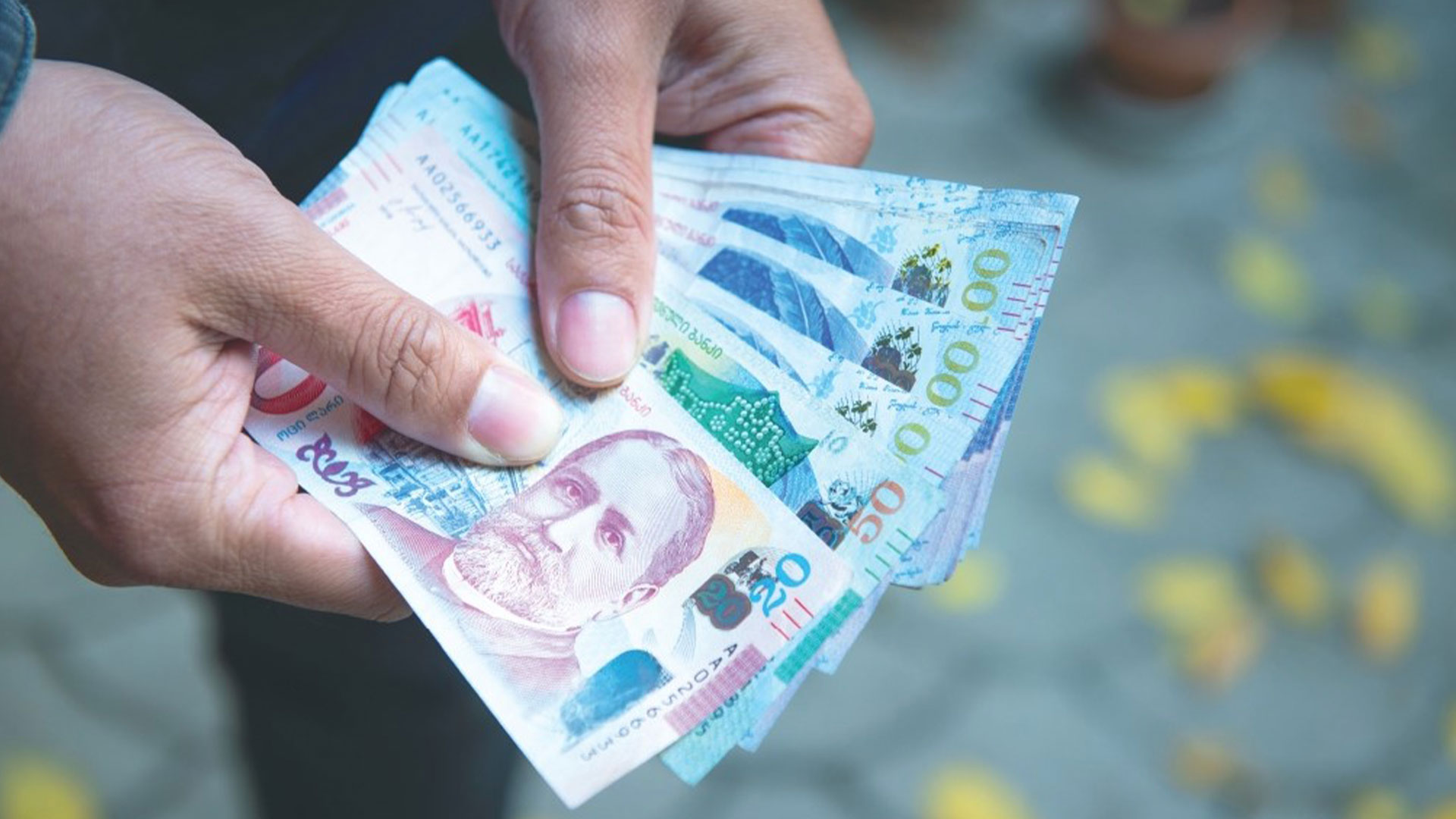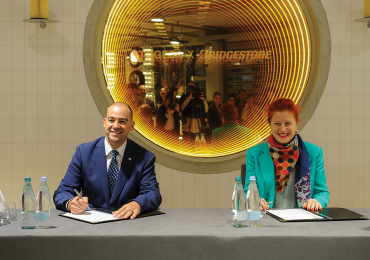2021 began with significant changes in Georgia, as the country’s former prime minister and richest citizen Bidzina Ivanishvili announced his decision to withdraw from politics, leaving the governing Georgian Dream party without his formal leadership for the second time. Whether or not Ivanishvili will once again return to his party in the future remains to be seen. Until then, let’s examine the path taken by the Georgian economy during the past eight years, as it sometimes followed a clear vision, and at other times simply went with the flow.
In the last eight years, Georgia had to deal with two economic crises. First came the 2014-2015 regional monetary crisis, which halted the country’s economic growth. Reduction in exports and other cash inflows led to the devaluation of the national currency. Tens of thousands of people who had taken out loans in foreign currency saw the cost of loan repayments go up. As the lari continued to depreciate, the government established the ‘larization’ programme and offered subsidies for borrowers to switch currencies.
The regional crisis continued to impact economic growth up until 2016. Although growth figures became healthier, the exchange rate never reached pre-crisis figures, and the currency continued to gradually depreciate in 2017, 2018, and 2019. The government actively pursued a ‘de-dollarization’ policy during this period. As a result, foreign currency loans became limited, and all loans up to ₾200,000 could only be issued in local currency.
Despite the devaluation of the national currency, Georgia achieved average annual growth of 4.9% in the period 2017-2019, which was the country’s best three-year result under the Georgian Dream government.
Economic development was helped by growth in international tourism and several large infrastructural projects. However, the COVID-19 pandemic brought a new reality to Georgia and the rest of the world in 2020. Georgia closed the year with a 6.1% decline. The IMF predicts the economy to recover by 4.3% in 2021, meaning that Georgia will be unable to reach the 2019 level of economic activity by the end of this year.
Have There Been Any Significant Changes in Per-capita GDP Figures in Georgia During the Past Eight Years?
There was no major breakthrough – although the economic growth figures posted by Georgia during the last eight years raised the average income of our citizens, the overall economic picture has not changed significantly. Relative to other countries, the figures have largely remained the same: Georgia was ahead of Armenia in terms of GDP per capita in 2012, and this was still the case in 2020. However, we are still lagging far behind even the poorest EU member states.
Moreover, the currency crisis further obscured Georgia’s economic results from the last eight years, as can be seen from GDP figures in USD. According to IMF data, Georgia’s GDP per capita was $4,409 in 2012 and reached its peak in 2014 ($4,742). As a result of the devaluation of the national currency, the figure decreased to $4,017, before rebounding to $4,765 in 2019. However, the 2020 recession forced another drop. The GDP per capita figure currently stands at $4,405, which is almost the same as in 2012.
However, GDP figures in USD do not reveal the full picture. The IMF uses an approach based on purchasing power parity (PPP), which provides a better opportunity to compare per-capita GDP figures from various countries. In this case, Georgia’s GDP per capita is $15,142, compared to $9,798 in 2012.
Nevertheless, the World Bank uses GDP in USD, rather than PPP dollars to group the countries based on their income. Georgia is currently in the upper middle-income group of countries – whose GDP per capita is at least $4,046.

Unemployment and the Average Wage
Unemployment has long been regarded as the number one economic problem in Georgia. When we talk about unemployment statistics, it normally makes sense to take official figures at face value.
However, outdated calculation methods ensured that Georgia’s official unemployment figures were detached from reality. A new methodology was implemented in December 2020, which does not automatically count people living in rural areas and growing produce for themselves as self-employed. Prior to the introduction of the new methodology, the official unemployment figure stood at 11.6%, but has now been revised to 17.6%. Past figures were also re-evaluated, revealing that the 2012 unemployment figure was 26.7%, rather than 17.2%.
Revised statistics still show that unemployment affects the 15-24 age group the most. 27.8% of 15–24-year-olds and 21.3% of 25–34-year-olds are currently unemployed.
The number of people employed in the business sector increased by 222,000 between 2012 and 2019 to a total of 756,000. In 2020, the figure decreased by 100,000.
The commercial sector accounted for the largest increase in employment during the aforementioned eight-year period, creating 96,000 new jobs (30,000 decrease in 2020). The restaurant and hospitality sector employed 48,000 people in 2019, which is 21,000 more than 2012. Unfortunately, this figure decreased by 18,000 in 2020.
Since 2012, the number of jobs in the private healthcare sector increased by 25,000, and the number of jobs in the construction sector by 11,000.
The average monthly salary increased by 58% between 2012 and 2019, from ₾712 to ₾1,129. However, average salaries in the healthcare and education sectors still fall below the national average. The average wage in the education sector is ₾798, while the average salary for healthcare is ₾1,036.
Georgia’s Credit Rating – a Step Forward
The country’s sovereign rating determines the risk premiums imposed by international financial institutions and investors on the local economy. A lower rating means less investment and more expensive foreign capital, which, in turn, raises the price of credit in the country.
Georgia’s risk level is assessed by international rating companies, who determine the country’s credit score by adding together different factors. Georgia’s rating remained unchanged from 2012 until 2017, when Moody’s upgraded it to Ba2. This was followed by Fitch in 2018 and by S&P in 2019, who both upgraded the sovereign rating of Georgia to BB.
The rating assessment holds that the development of the Georgian financial system and the country’s sustainable microeconomic environment have both lowered the risks associated with Georgia. Naturally, these changes have a positive effect on the country’s international image.
However, Georgia still remains two steps short of achieving an ‘investment rating’. Considering that it took the country seven years to climb one rung of the ladder, we can presume that Georgia will find it extremely difficult to further improve its score in less than ten years.
Both Fitch and S&P have noted that Georgia’s credit rating will only improve if, among other factors, the country’s GDP per capita improves. Thus, the foremost prerequisite for achieving higher credit rating is economic growth.
Budget Priorities
Georgia’s budgetary policies changed significantly when Georgian Dream came to power. The share of social spending within total government expenditure went up, and subsidy programmes were expanded. Initially, most of these programmes were directed towards agriculture, before expanding to other sectors through the Enterprise Georgia project. State administration and bureaucratic costs also increased. The financial statements of the Ministry of Finance of Georgia show that part-time staff salaries alone increased from ₾99 million in 2012 to over ₾240 million in 2020. Full-time staff salaries increased from ₾600 million to ₾1.6 billion (excluding bonuses) during the same period.
In terms of individual sectors, the largest sums are spent on healthcare and social security each year. The 2021 pension reform has introduced an indexation formula which ensures that pensions will increase by at least ₾20 each year. This change is designed to detach the issue of pension increases from pre-election campaigns. At present, the basic monthly pension is ₾240, which is ₾115 more than in 2012. However, its purchasing power in USD has remained virtually unchanged. Regarding healthcare, chief among the recent reforms was the universal healthcare programme, which provided state subsidies for certain hospital services to all citizens who have no private health insurance. This programme aims to reduce the catastrophic costs of healthcare borne by Georgian citizens. To optimize costs, the government introduced certain changes in the programme in 2017, removing the universal component. Nevertheless, annual results for each year between 2015 and 2020 show that the government is struggling to control expenses associated with this programme, going over its annual budget on a regular basis. For example, government spending on the programme last year amounted to ₾948 million, which is ₾146 million more than initially planned.
The second-largest budget after healthcare has been commanded by the Ministry of Infrastructure for quite some time already. The single most expensive project is the construction of the main East-West Highway, which has cost ₾4 billion during the 2012-2020 period, and will require at least the same amount by the time of its planned completion in 2025.
Apart from the main highway, the most significant state project was the Anaklia Deep Sea Port, which was frozen and mothballed in early 2020, when the government tore up the contract with the Anaklia Development Consortium. Investors went on to appeal this decision via the International Court of Arbitration. The government claims that it is working on a new feasibility study and new tenders for the project, but the programme section of the 2021 State Budget states that the project is unlikely to attract reputable investors after what has happened, and the prospects for a successful tender process are bleak.
State Debt
The legal limit has been exceeded – according to the explanation note on the 2021 State Budget, Georgia’s debt will be 60.1% of GDP this year, thereby exceeding the limit set by the Organic Law on Economic Freedom. The government has promised to reduce both the deficit and state debt over the next three years.
Foreign debt will once again constitute the main source of funding for increased budget spending in 2021. The government plans to borrow an additional ₾5.27 billion this year, of which ₾1.45 billion will be directed towards infrastructural investment projects, ₾2.17 billion will be spent on budget support loans, while ₾1.65 billion will be used to refinance Eurobonds worth $500 million.
The plan is to have no internal debt this year, which is presumably designed to avoid a further increase in the overall debt figures. In 2020, the government borrowed an additional ₾2 billion domestically, bringing the total government debt figure to ₾30.8 billion, of which ₾24.7 billion ($7.5 billion) is external debt, and ₾6.14 billion is internal debt.
According to the debt analysis document attached to the State Budget, if the national currency suffers another shock this year and depreciates by 30%, the volume of state debt will exceed 75% of the country’s GDP.
The sharp increase in Georgia’s state debt in recent years is tied both to new investment loans and the devaluation of the local currency. Debt grew by an additional ₾8 billion in 2020 due to the pandemic.
In comparison, in 2012 the total state debt was only ₾9.1 billion, or 34% of GDP. By 2021, overall debt trebled, while the level of debt relative to GDP nearly doubled.
The most urgent and acute challenge facing Georgia right now is to recover the tens of thousands of jobs that were lost during the economic crisis. Otherwise, any progress achieved with regards to reducing poverty and unemployment in recent years will be consigned to history.
Forbes Georgia: სარედაქციო გუნდი


















